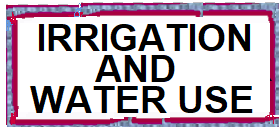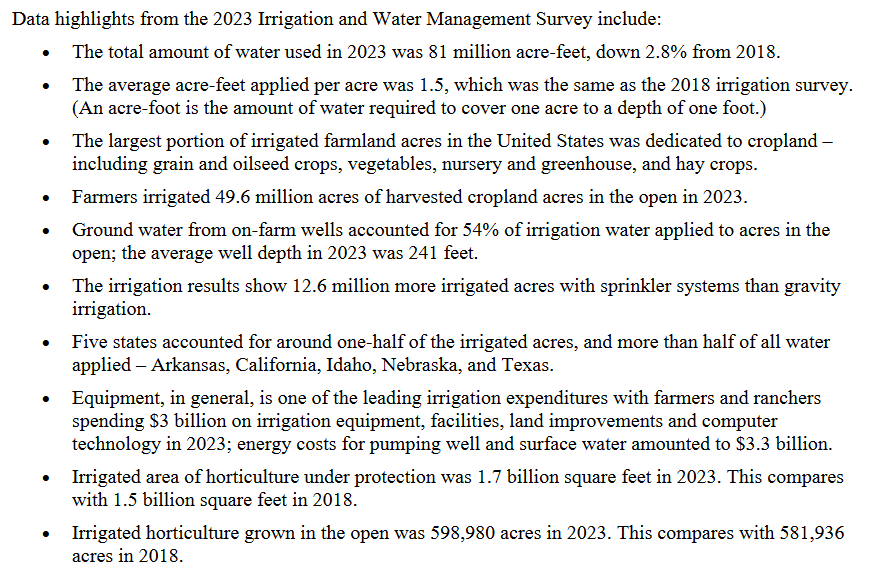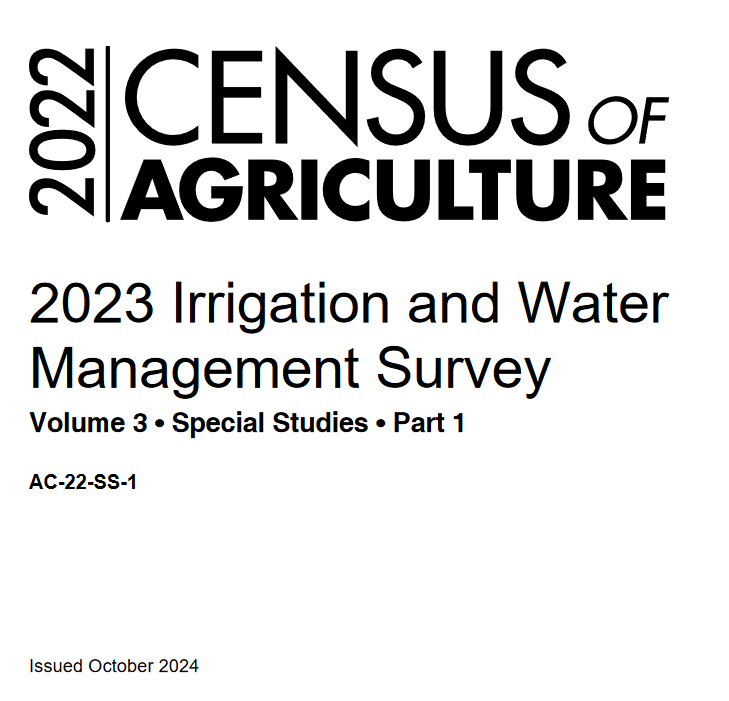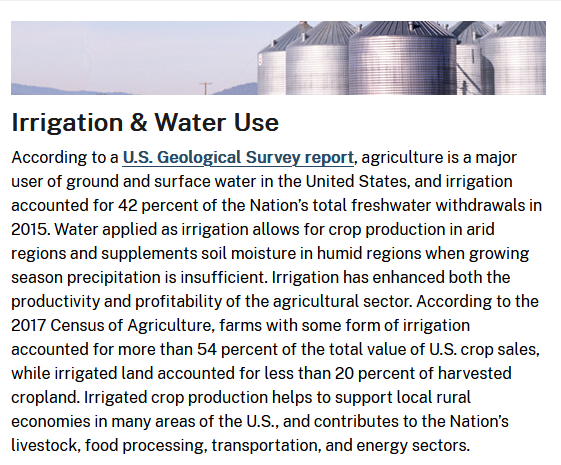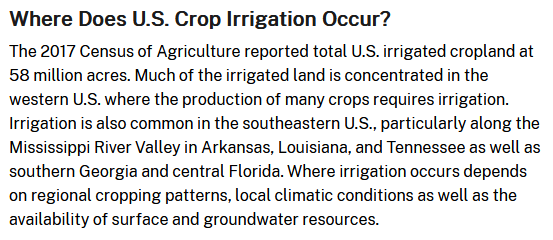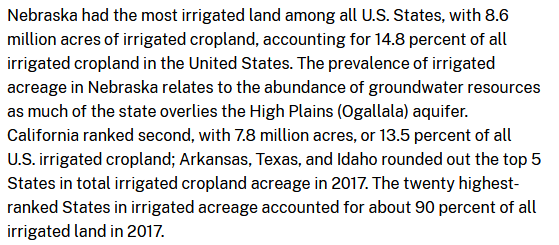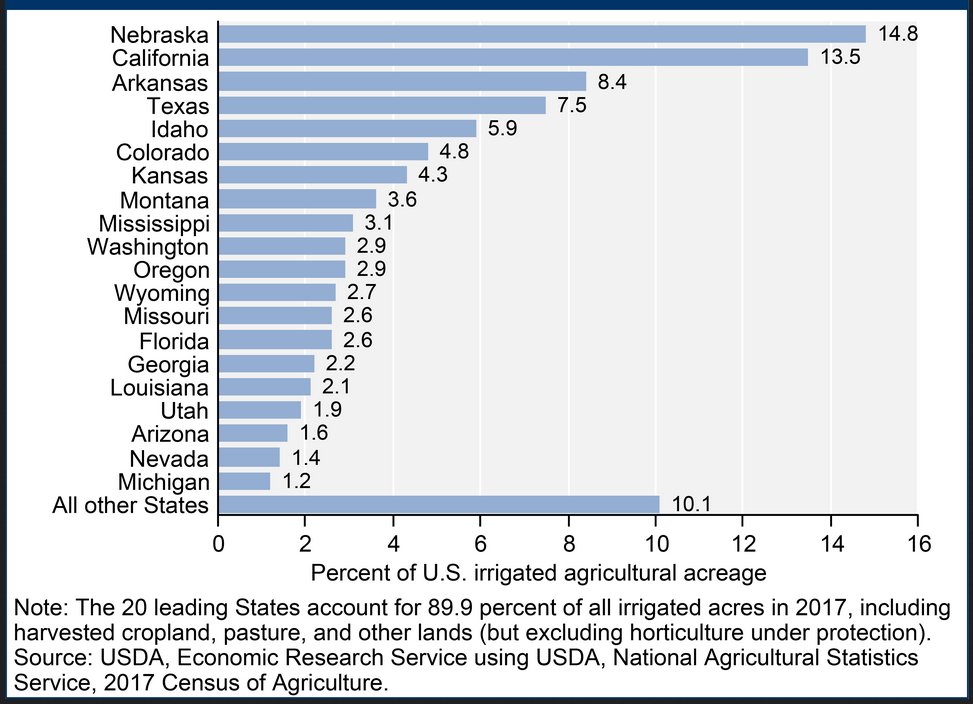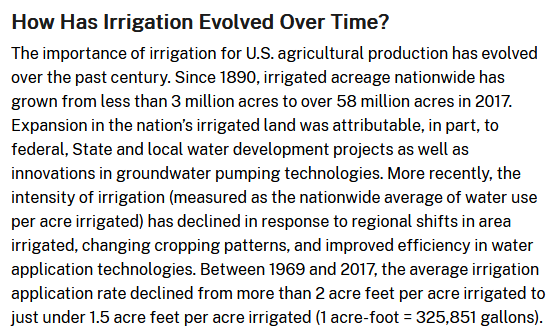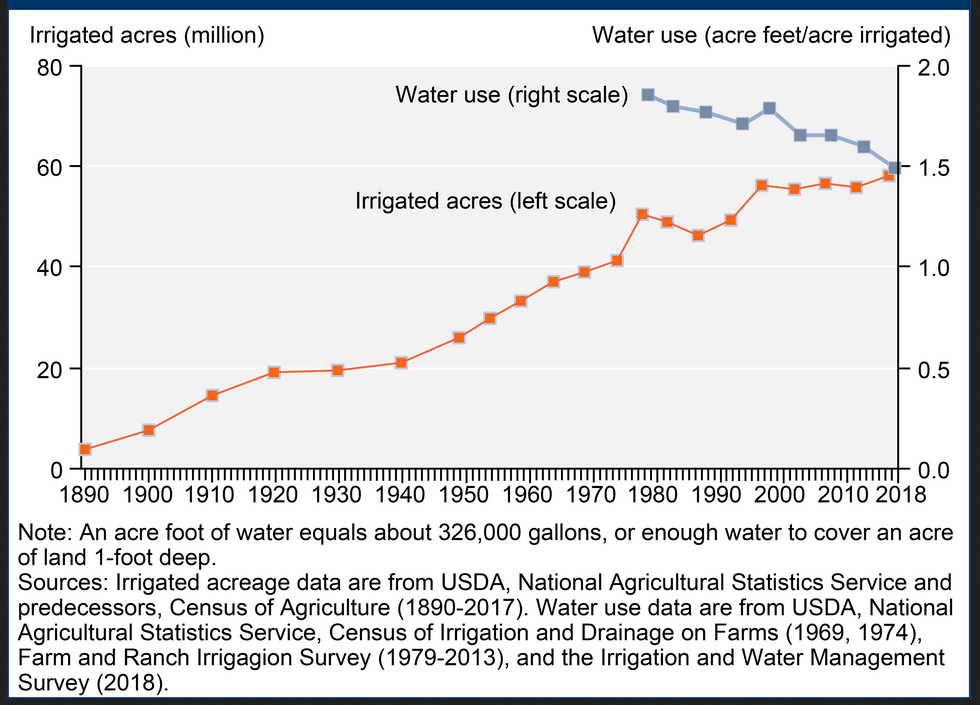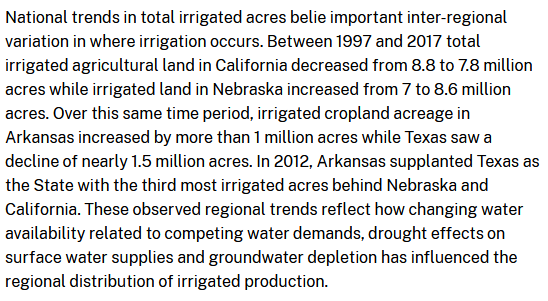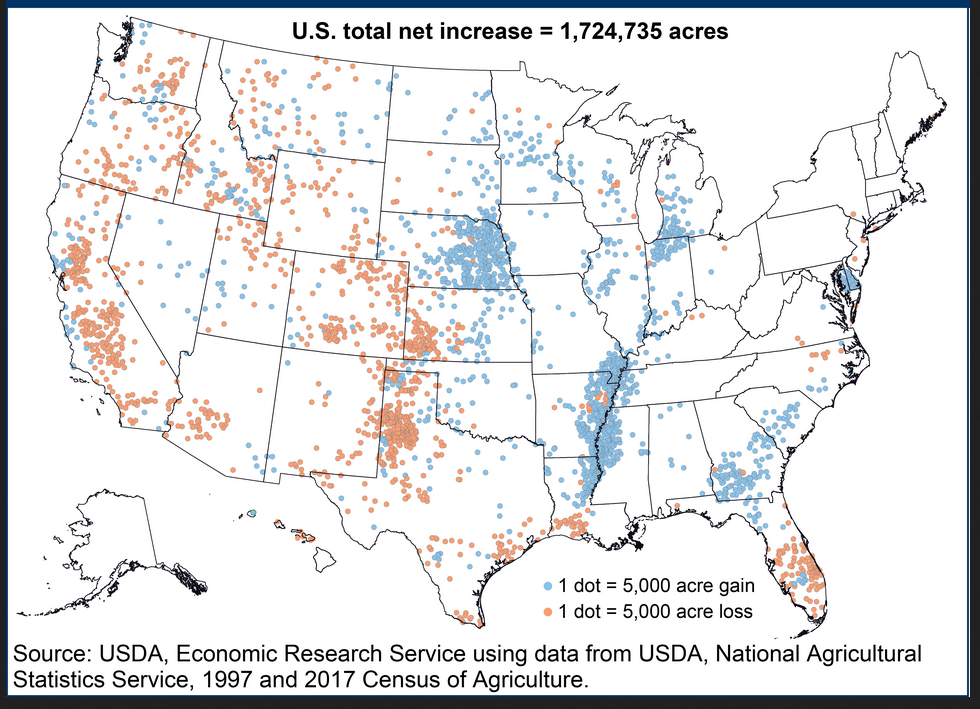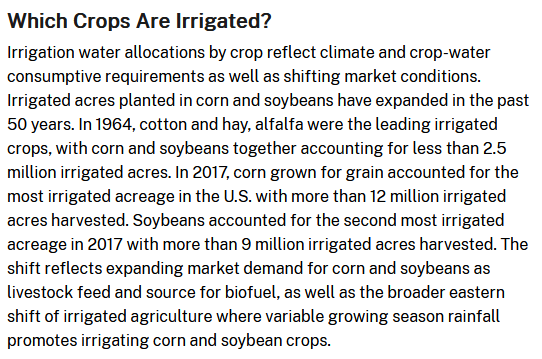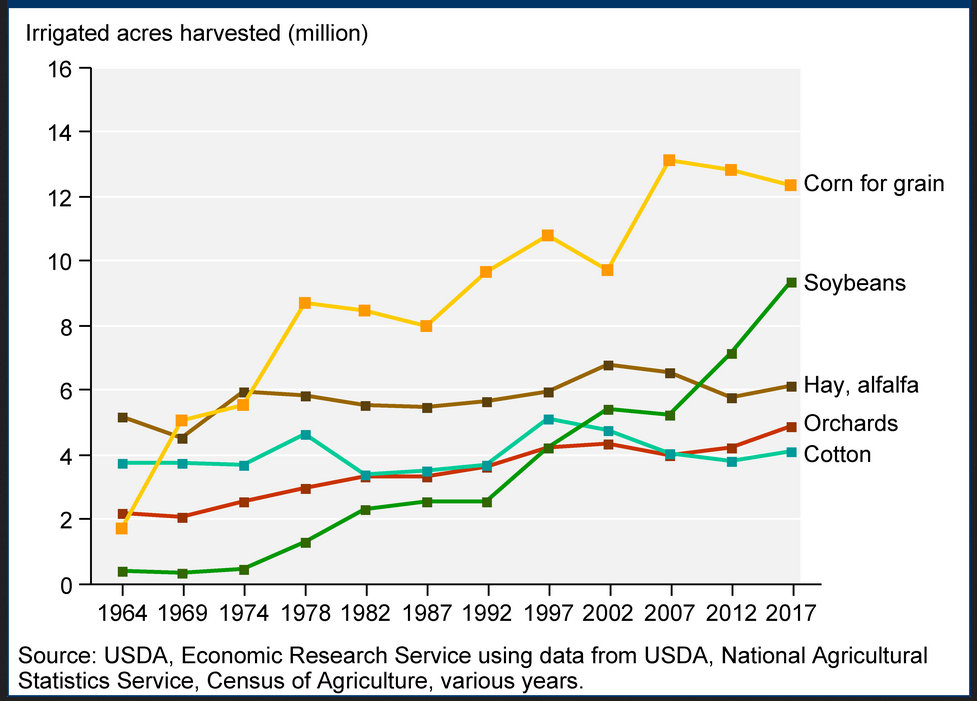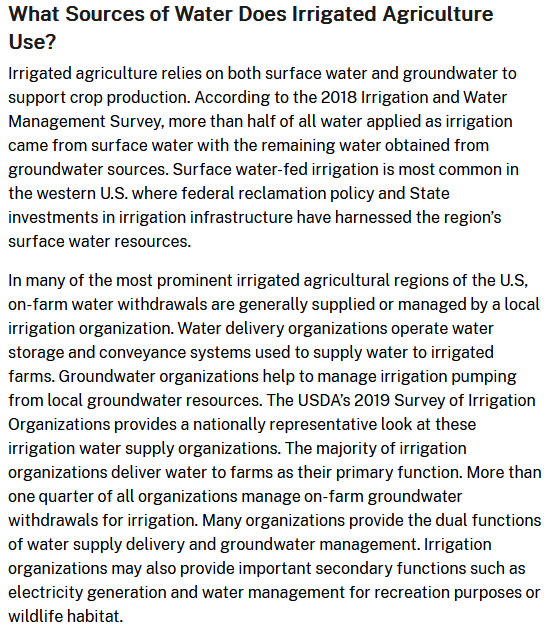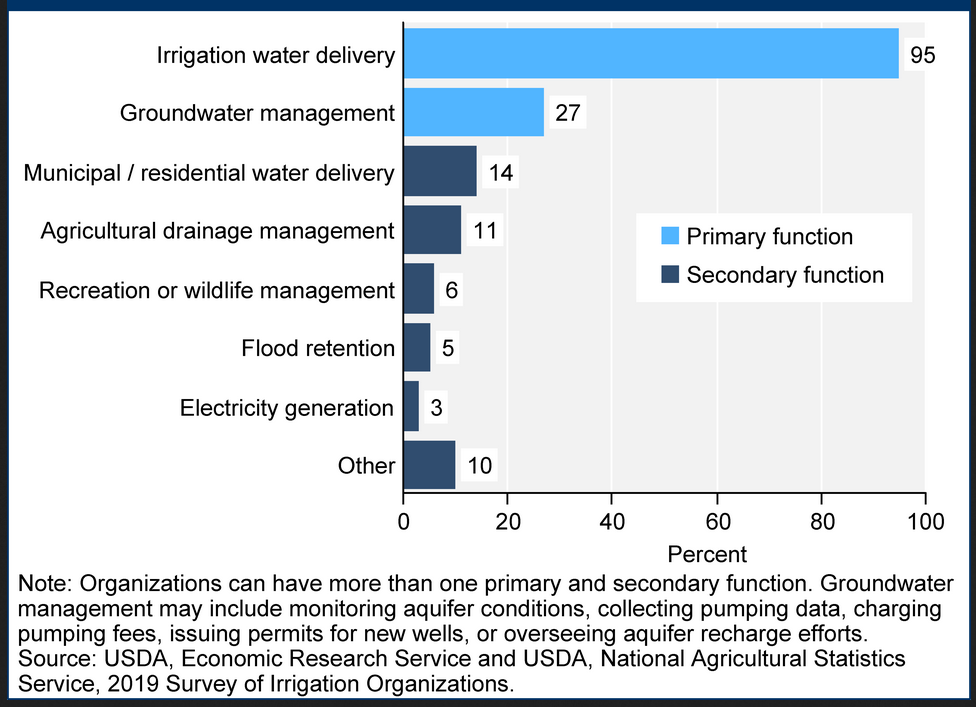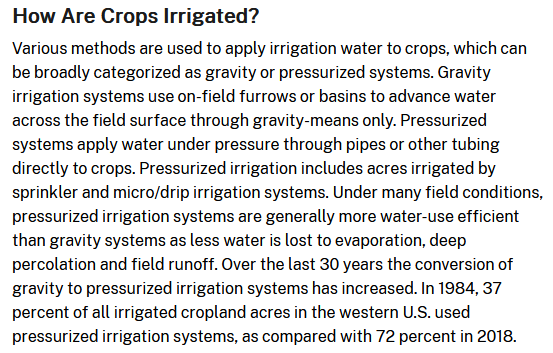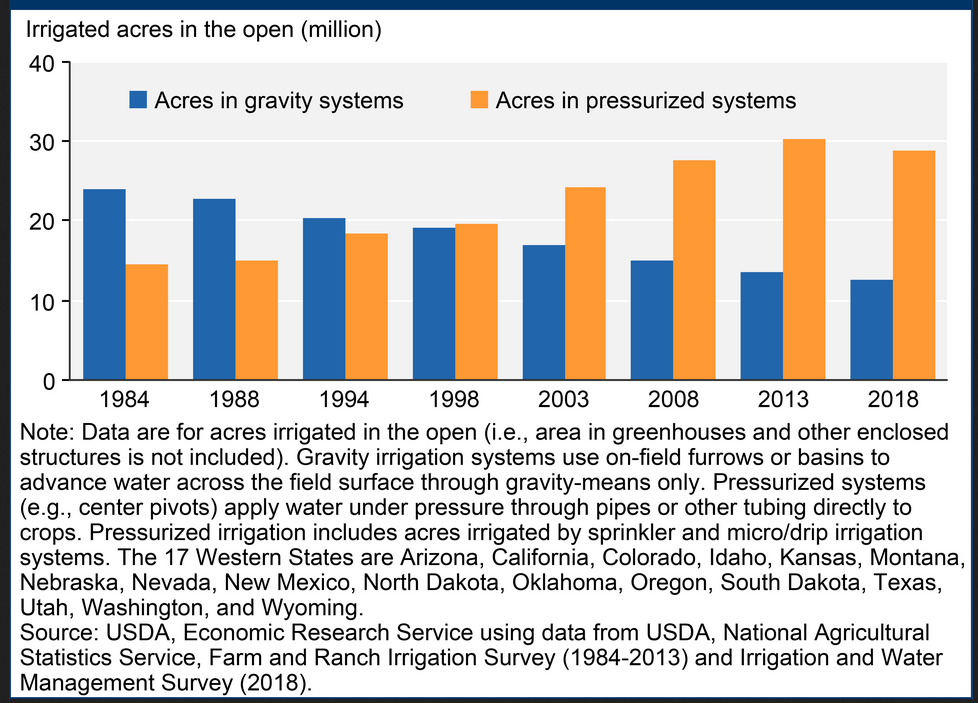As usual, my comments if any are in a box. I made only one comment so far in this article and it is in a box to differentiate it from the USDA information.
Some will need to click on “Read More” to access the rest of this article. That will not be necessary for those who were sent the url of this article.
Some of the results of the 2022 Agricultural Survey related to irrigation can be found HERE. But as far as I can tell it was not processed into a report by the USDA Economic Research Service as was done with the 2017 Survey. Maybe I just could not find it or perhaps it has not been issued just yet. But I do not have it.
There is a lot of data at the above link including data by state. The data is updated each year as there are partial surveys every year. I had the links to that information but apparently did not save it so I could not include it in my article last night. I tried to find it but failed. I am sure it can be found.
So I decided to provide the report from the 2017 Survey LINK.
It is a little out of date but I believe that it is still very useful. One can cross-check the below with the 2022 Census and I have provided the link to the part of that census that deals with irrigation.
I found this graphic very interesting. As the number of acres irrigated increased, the amount of water used declined. That is amazing. In the text above that graphic it indicates that the application of water has declined from 2 acre feet of water per acre to 1.5 acre feet per acre. In the state where I live, New Mexico, it is probably about 3.5 acre feet per acre. The amount of water that needs to be applied is called the farm delivery requirement (FDR). Much of that water returns to a stream, sinks into the ground or is lost to the atmosphere. Only a part of that water is utilized by the crop and that amount is called the Consumptive Irrigation Requirement (CIR) and often is around 2.0. So I conclude that much of the irrigated land in the U.S. depends on a combination of irrigation and precipitation falling on the land. Thus the data in the USDA report really needs to be considered in conjunction with precipitation data.
–
| I hope you found this article interesting and useful. |
–
